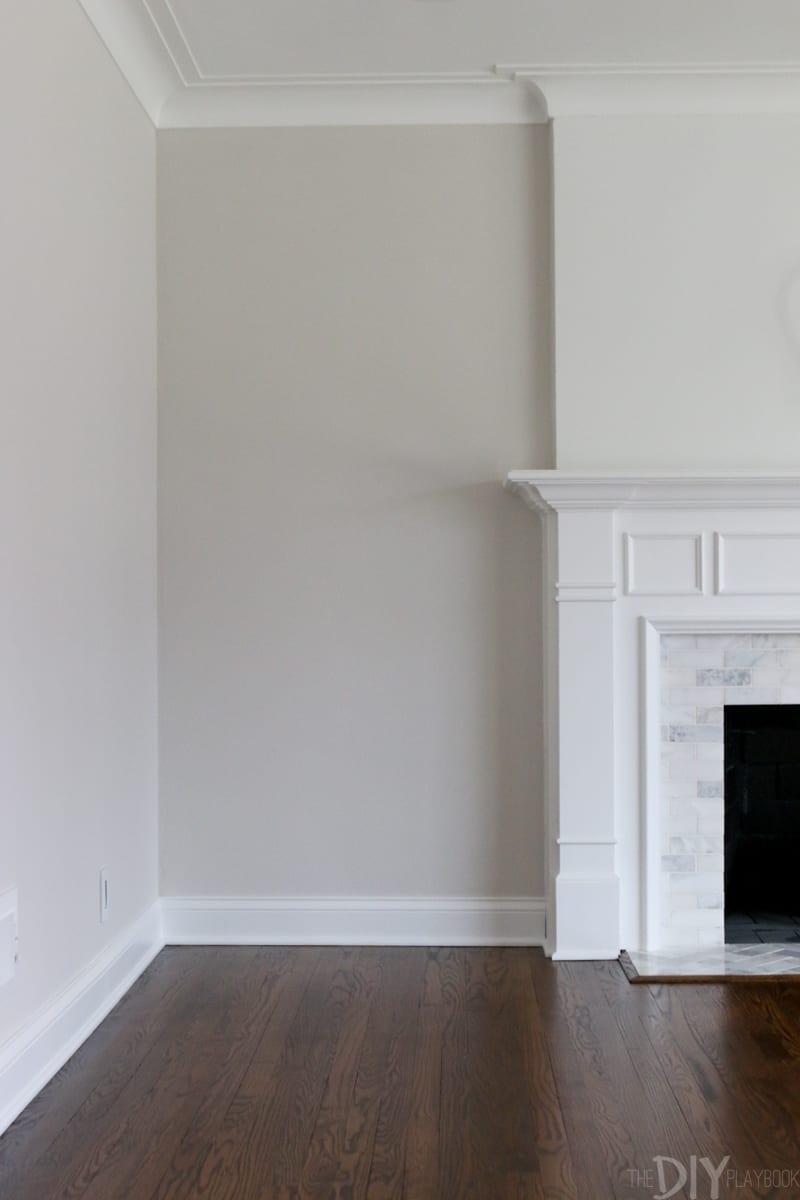Wall Anchors 101
Whenever I hang anything and document it on Instagram stories, I’m always bombarded with a million questions about how to properly hang things. Do I need a wall anchor? What if I hit a stud? What anchor should I use for my plaster walls? Today, I’m bringing you a detailed blog post answering all of those questions (and more!).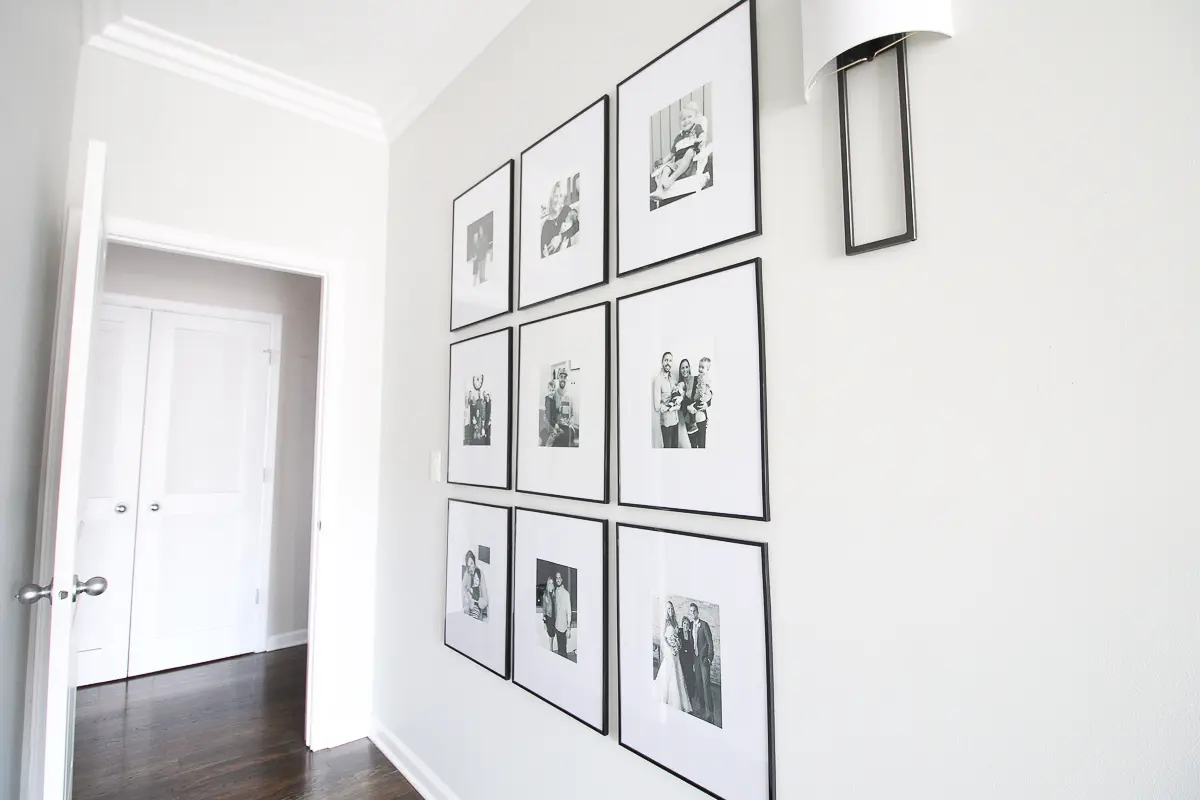
I totally get the mystery and hesitation about hanging items on your walls. It can feel scary to create a big hole in your wall. I used to feel that same way until I started hanging stuff by myself regularly. Now, it’s second nature. In fact, when we moved into our house I went around the house that first week hanging all the things…shelves, towel hooks, toilet paper holders, curtains, etc. Finn thought it was hilarious because I was just looking for more and more items to hang!
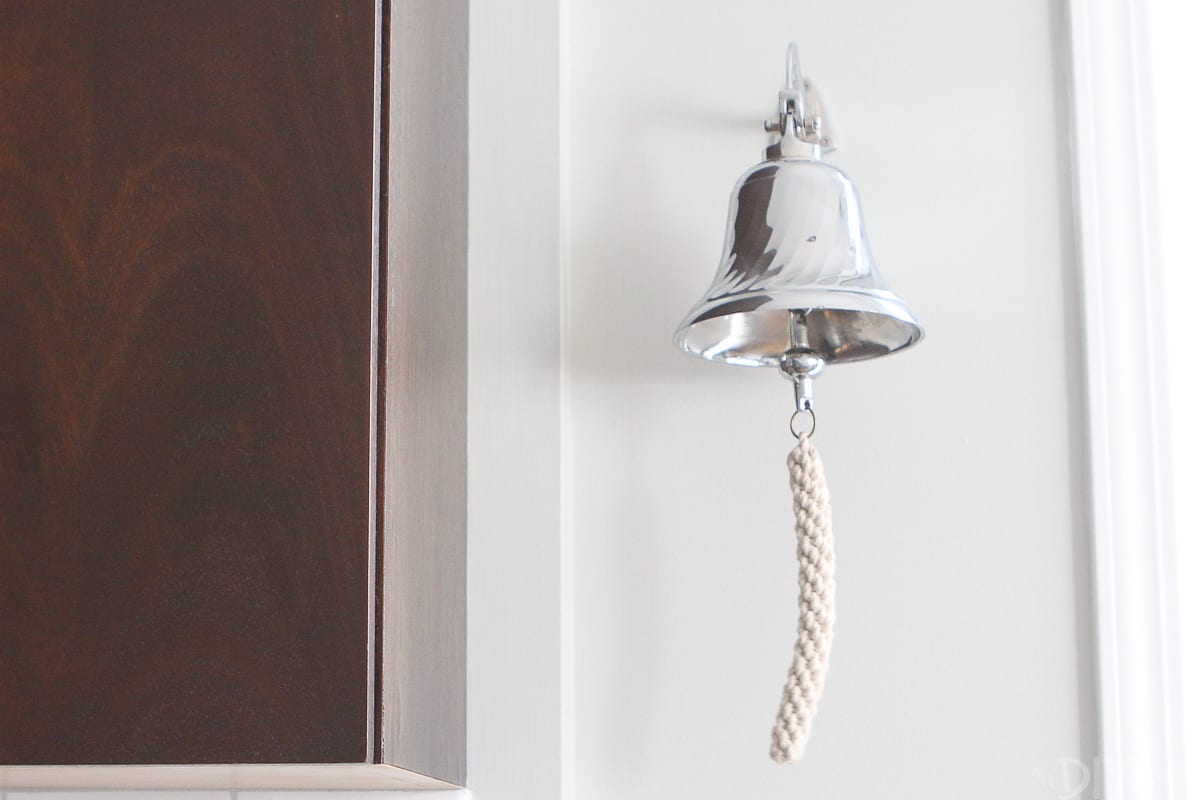
I want you to feel that same sense of empowerment. There’s no need to call a handyman or make your husband hang something for you. You can do this all by yourself!
Wall Anchors FAQ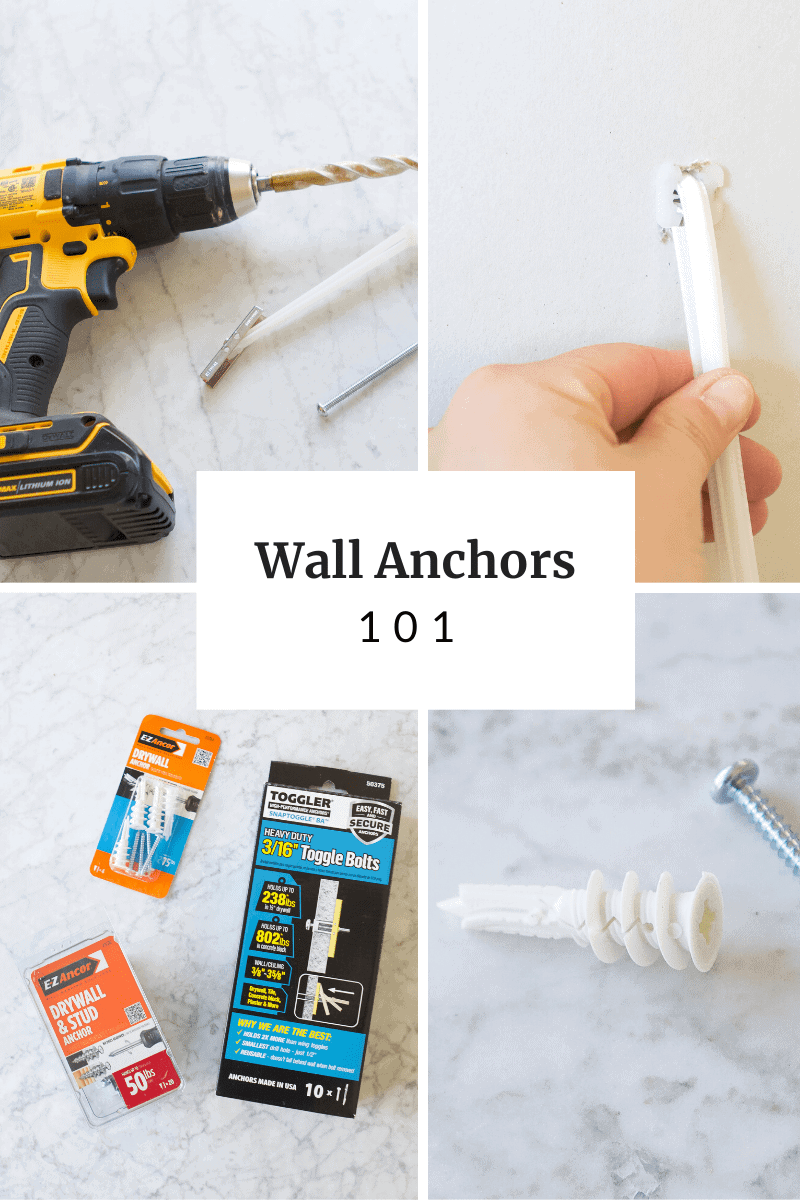
I’m breaking it down by the questions I receive the most when it comes to hanging. Hopefully, this will help demystify wall anchors…
Do I need a wall anchor if there’s a stud?
No. Hanging something where you can access a stud is the best possible scenario! Studs are usually placed 16 inches apart, so you may not always hit one during your project. But, if you do, that means your screw is going into a piece of wood framing and it will be very secure.
To find a stud, I always use a stud finder. This is the one we own and use all the time. I think it’s a homeowner essential (more on the tools I think everyone should have in this blog post) because you’re bound to hang things on your walls at some point during your homeownership journey. When I’m hanging something on the wall, I use my stud finder first to see if I’ll hit one. If not, it’s time for a wall anchor…
When do I need to use a wall anchor?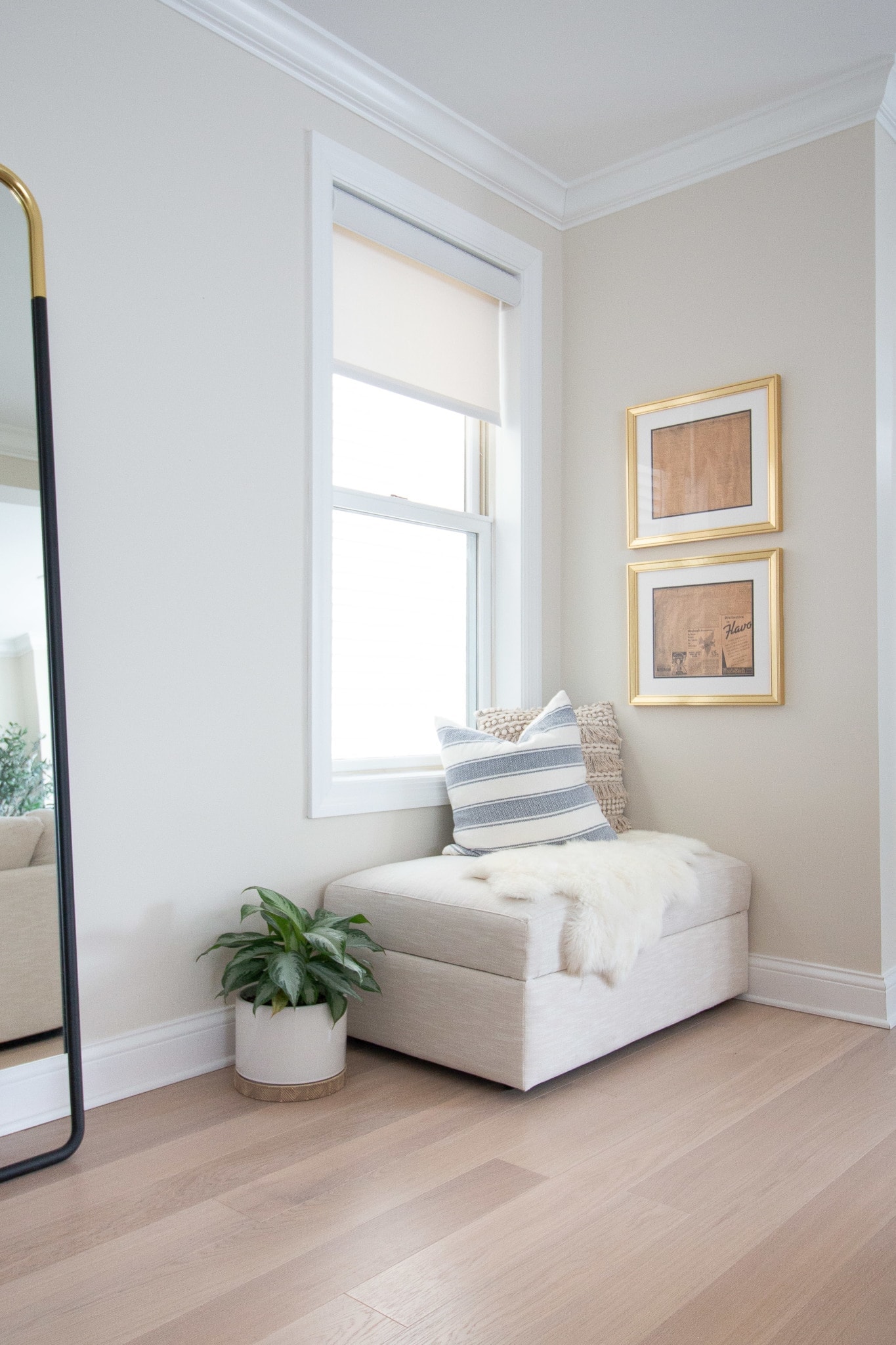
You need to use a wall anchor if the item you’re hanging is heavy. I’d say for most regular-sized picture frames, you probably don’t need to use a wall anchor. But if your piece is over 5 lbs, then a wall anchor is the way to go.
What if my item is light?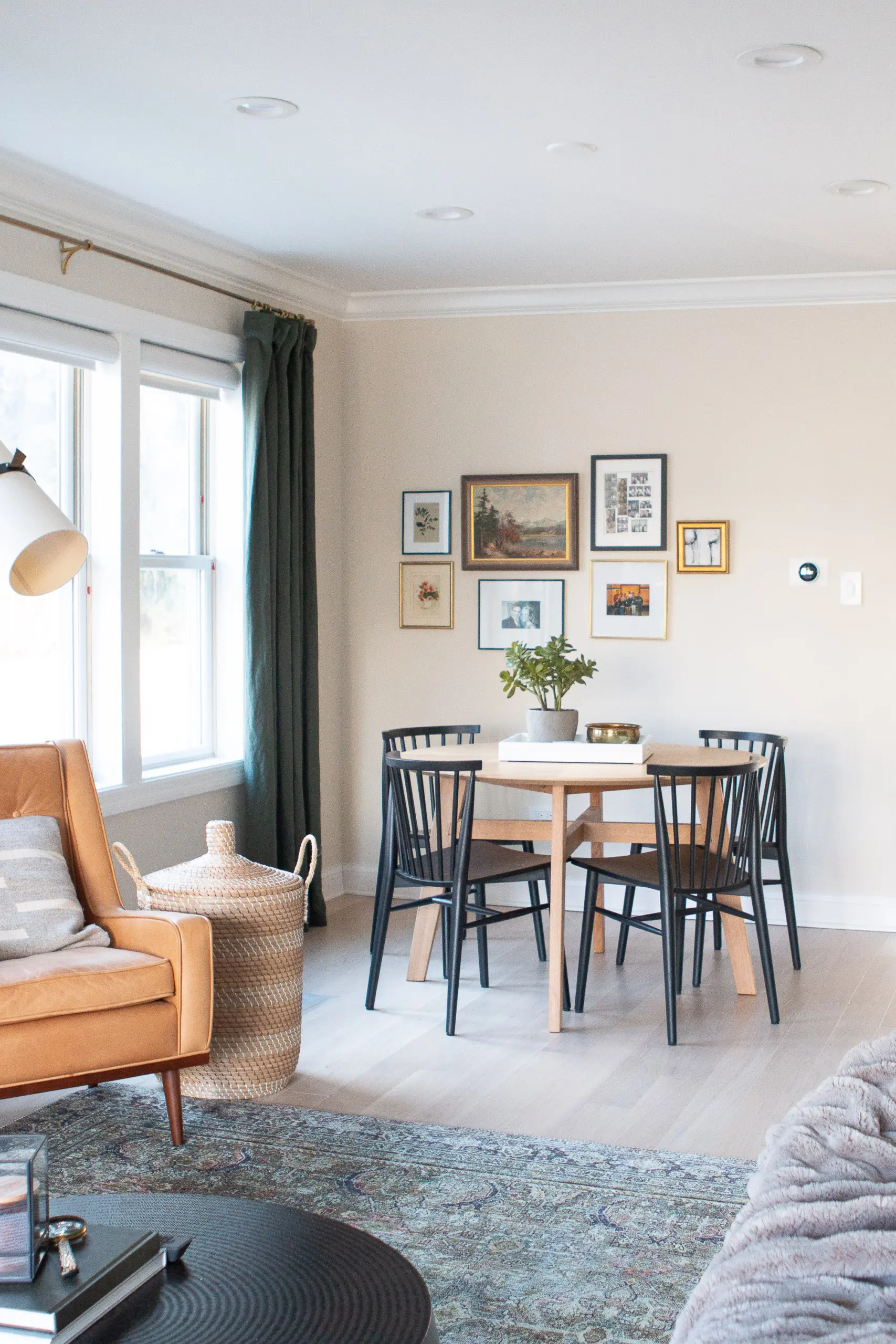
When I hang a light item (like a small piece of art), I often use a nail, command strips, or both. In our living room gallery wall, I didn’t hit any studs but the items were all very light. I opted for nails and command strips to keep these secure (they are all still holding strong!).
What kind of wall anchor should I use?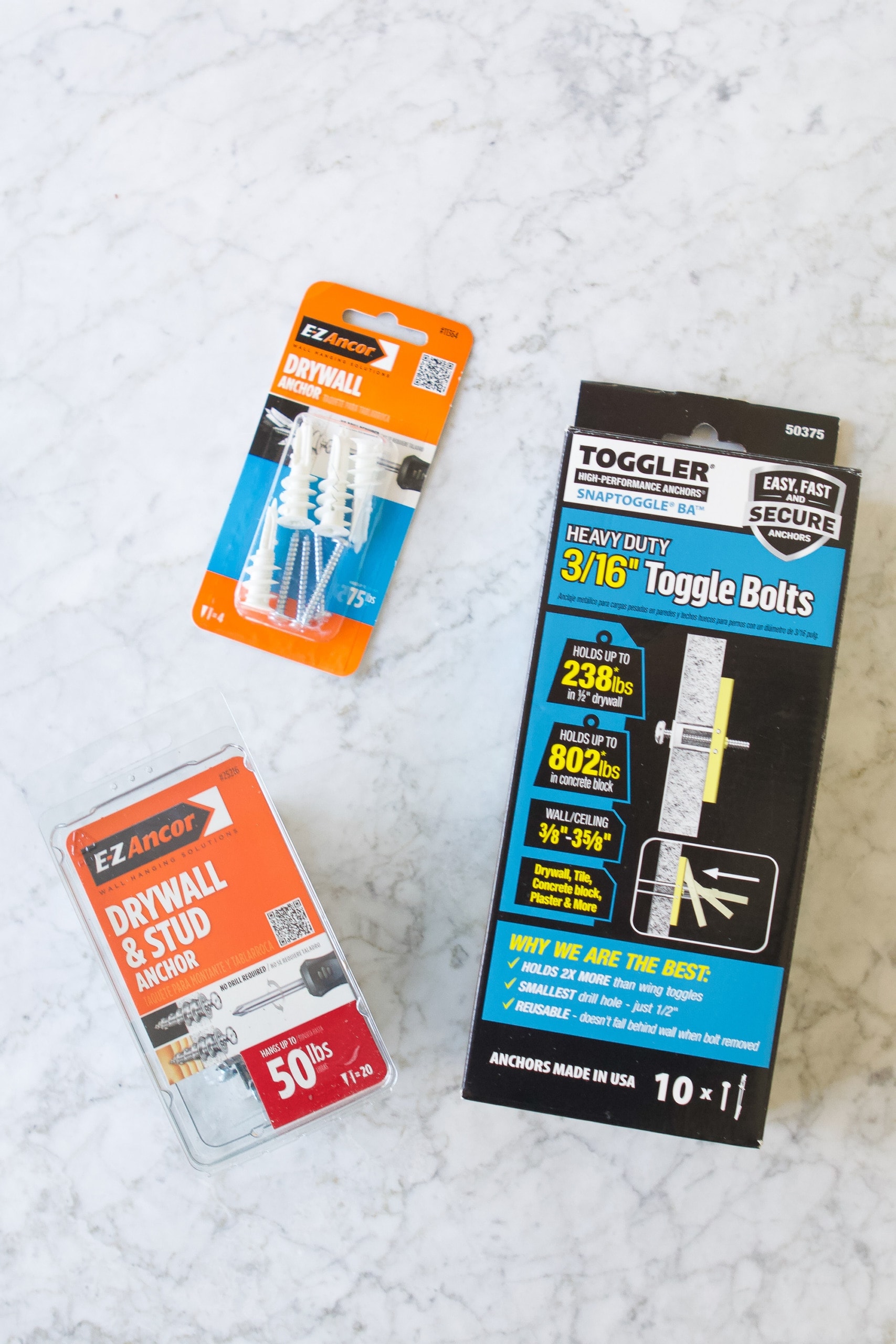
There are lots of wall anchors out there and choosing the right one can be pretty overwhelming. Let’s dive into the common types and when you should use them.
Expansion Anchor: These are anchors that often come with something when you buy it. For example, if you buy a shelf, it might come with expansion anchors and screws for hanging. Honestly, these are not my favorite because I just don’t think they’re strong enough. When possible, I ditch the hardware that comes with an item and I upgrade to winged plastic anchors.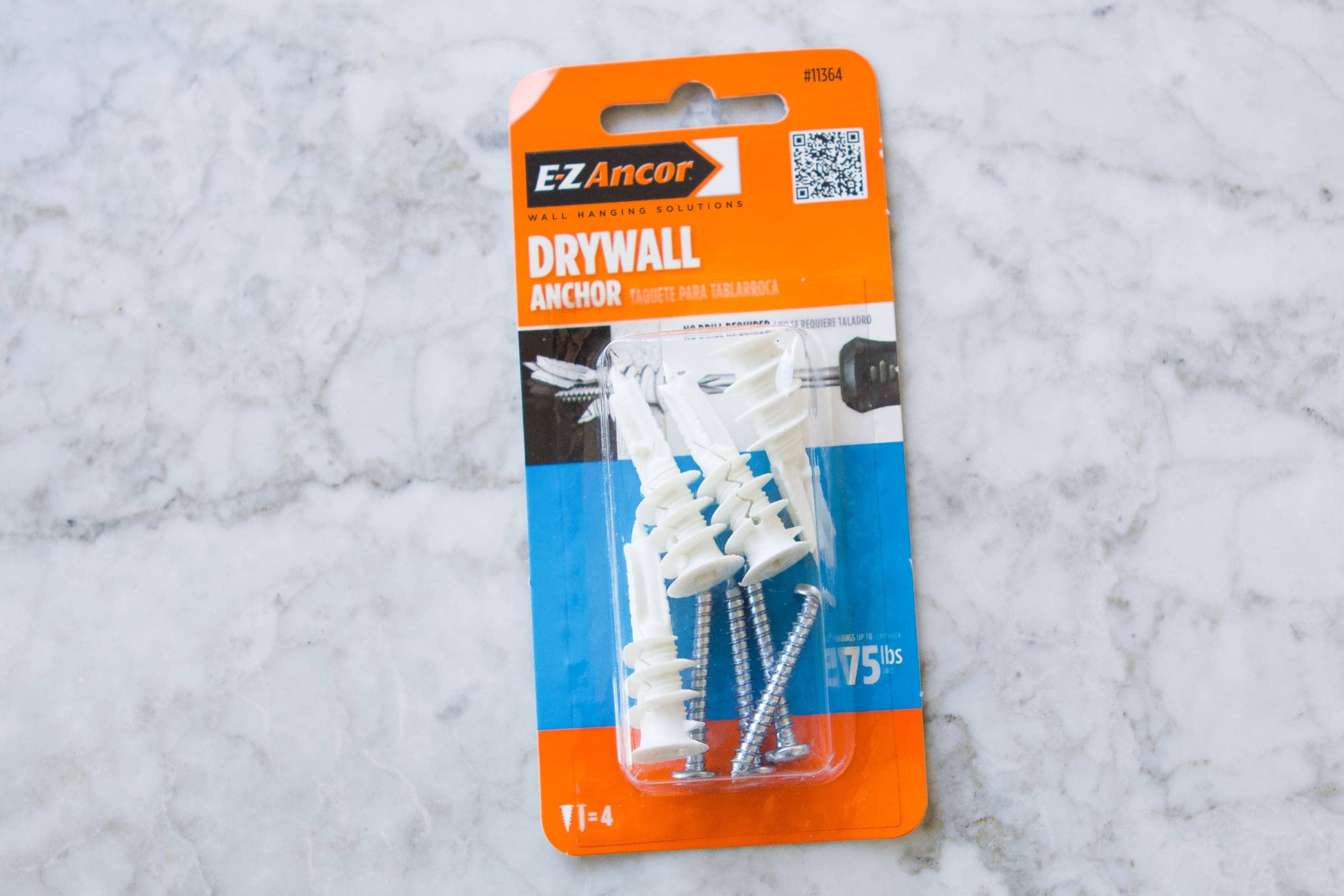
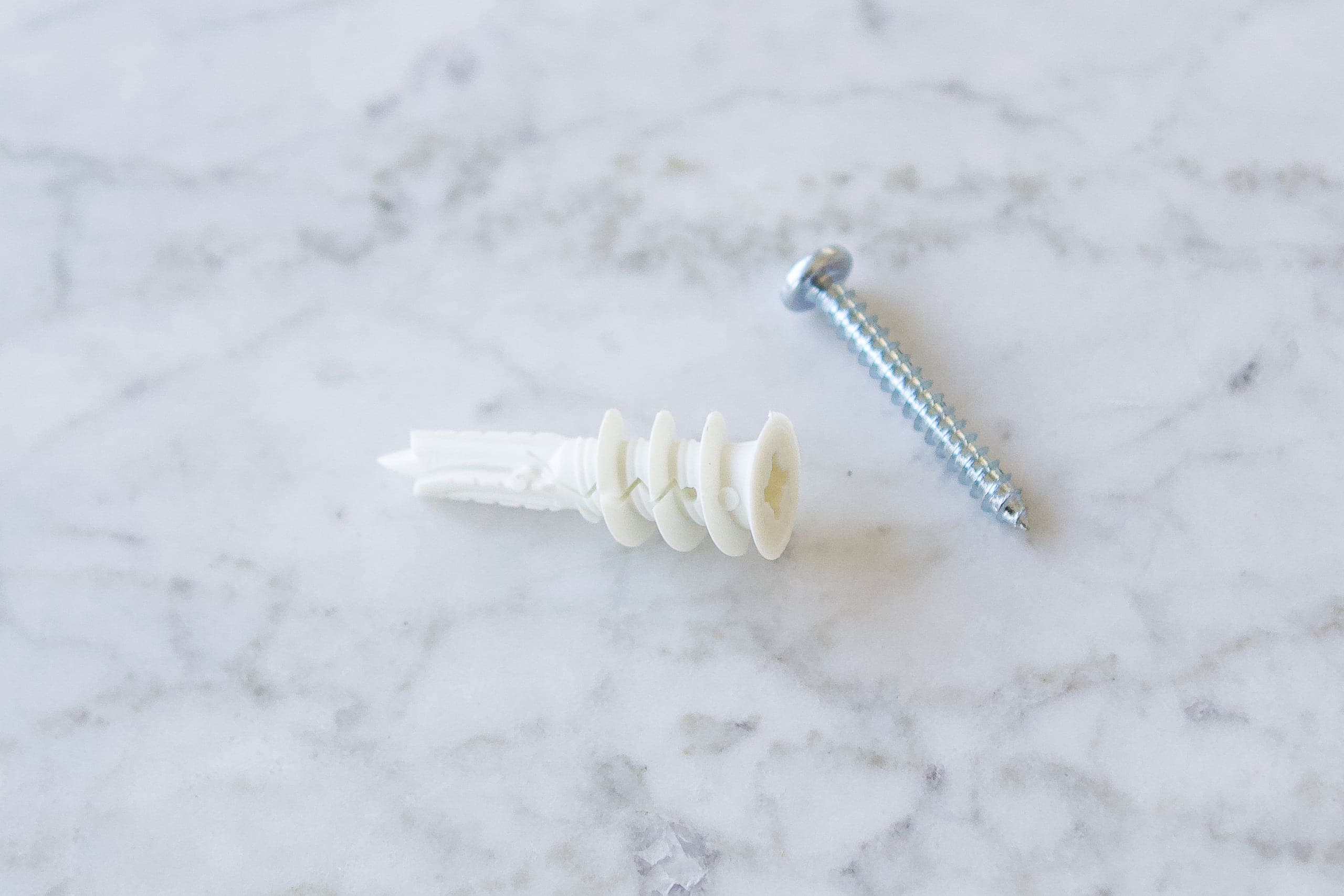 Winged Plastic Anchors: I use these wall anchors most often around the house. They’re easy to use and super sturdy. This is the kit I always have on hand because they can hold a lot of weight. When you insert the screw into this anchor, the plastic splits in half into “wings” that grip the drywall. Hence, the name for this wall anchor.
Winged Plastic Anchors: I use these wall anchors most often around the house. They’re easy to use and super sturdy. This is the kit I always have on hand because they can hold a lot of weight. When you insert the screw into this anchor, the plastic splits in half into “wings” that grip the drywall. Hence, the name for this wall anchor.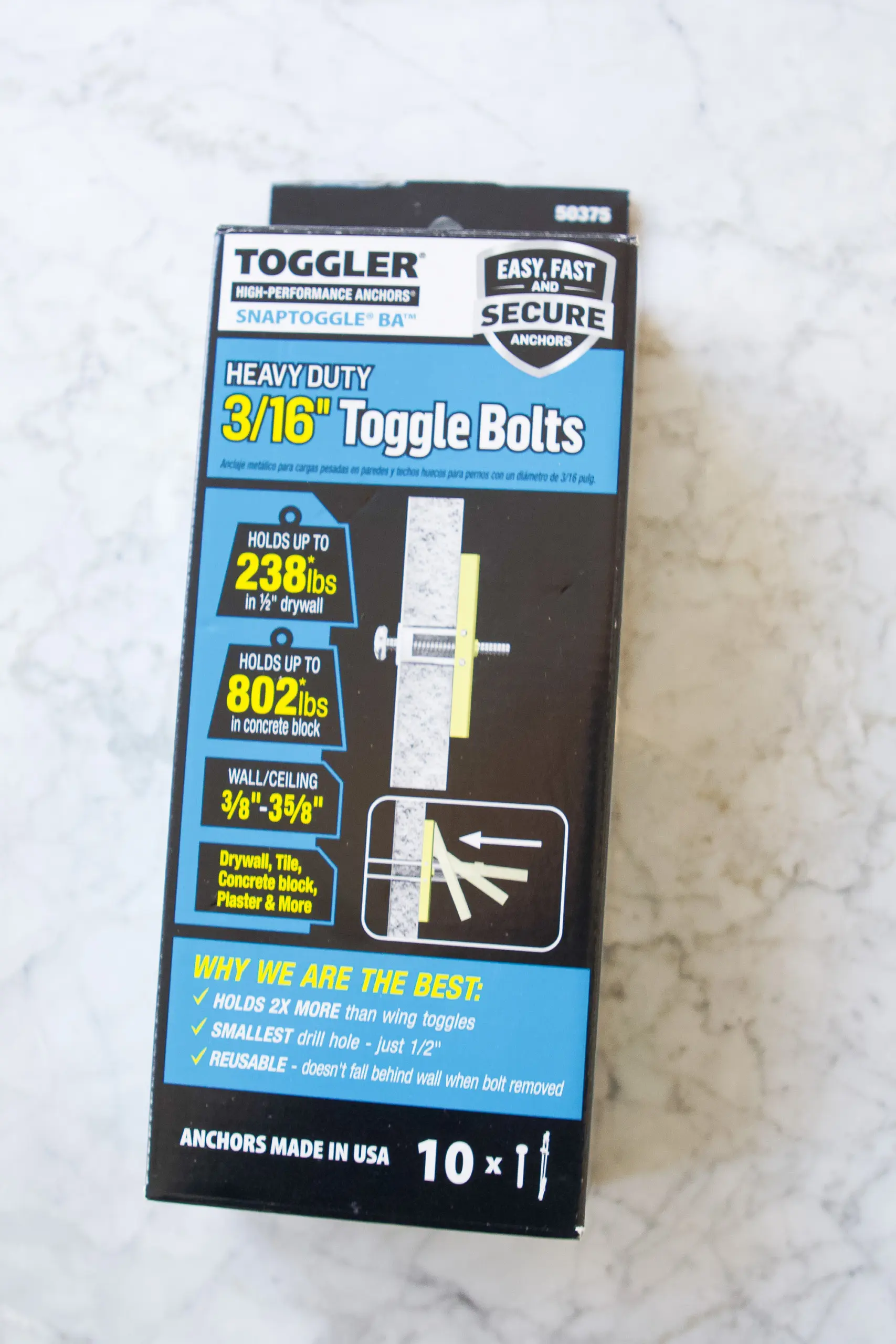

Snap Toggle Bolts: Snap toggle bolts are great for heavy-duty projects when you’re hanging really heavy items. We used these to hang our TV, to hang cabinetry, and more. They can hold up to 238 lbs!
What if I have plaster walls?
We have plaster in the living room of our house (it was originally a small 1921 bungalow) and the rest of the house is drywall (additions that were added throughout the years). When I first went to hang shelves in the front closet, I was horrified that my plastic anchors weren’t working. I quickly realized that the walls were plaster and this was my first run-in with the material. After chatting with my contractor for advice, he told me to always use self-drilling metal anchors for plaster.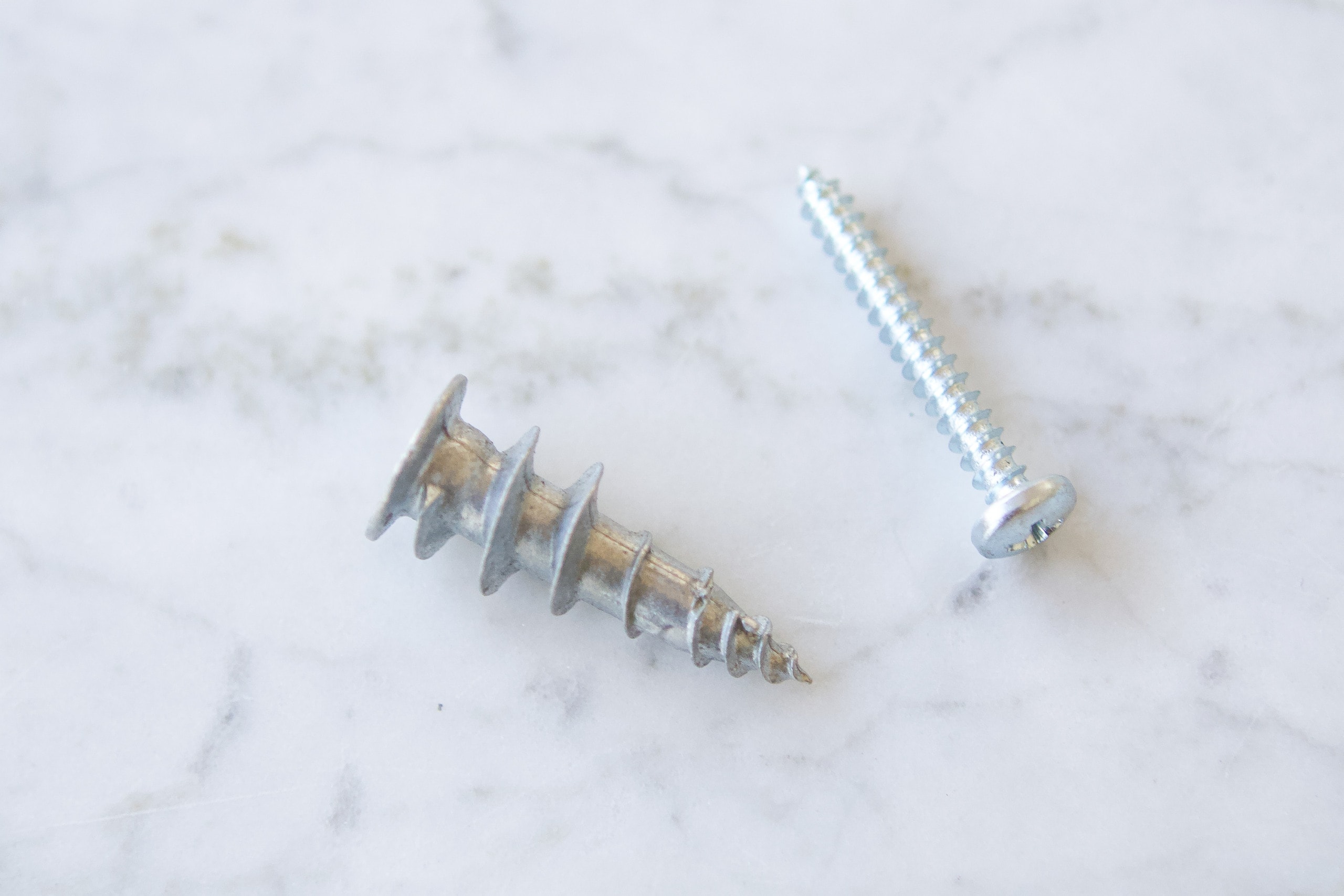
I got these self-drilling metal anchors and they work like a charm! You use them as you would any other wall anchor. The only difference is that they are made of metal and can easily go through the tough plaster material.
What are the steps to use an anchor?
The biggest mystery about wall anchors is what the heck is going on behind the wall. I thought it would be eye-opening to show you what it looks like on the other side of the wall, so I bought a piece of drywall for this experiment.
Steps to Install a Drywall Anchor
- Use a pilot bit to make a hole in the wall roughly the same width as the end of the plastic anchor.
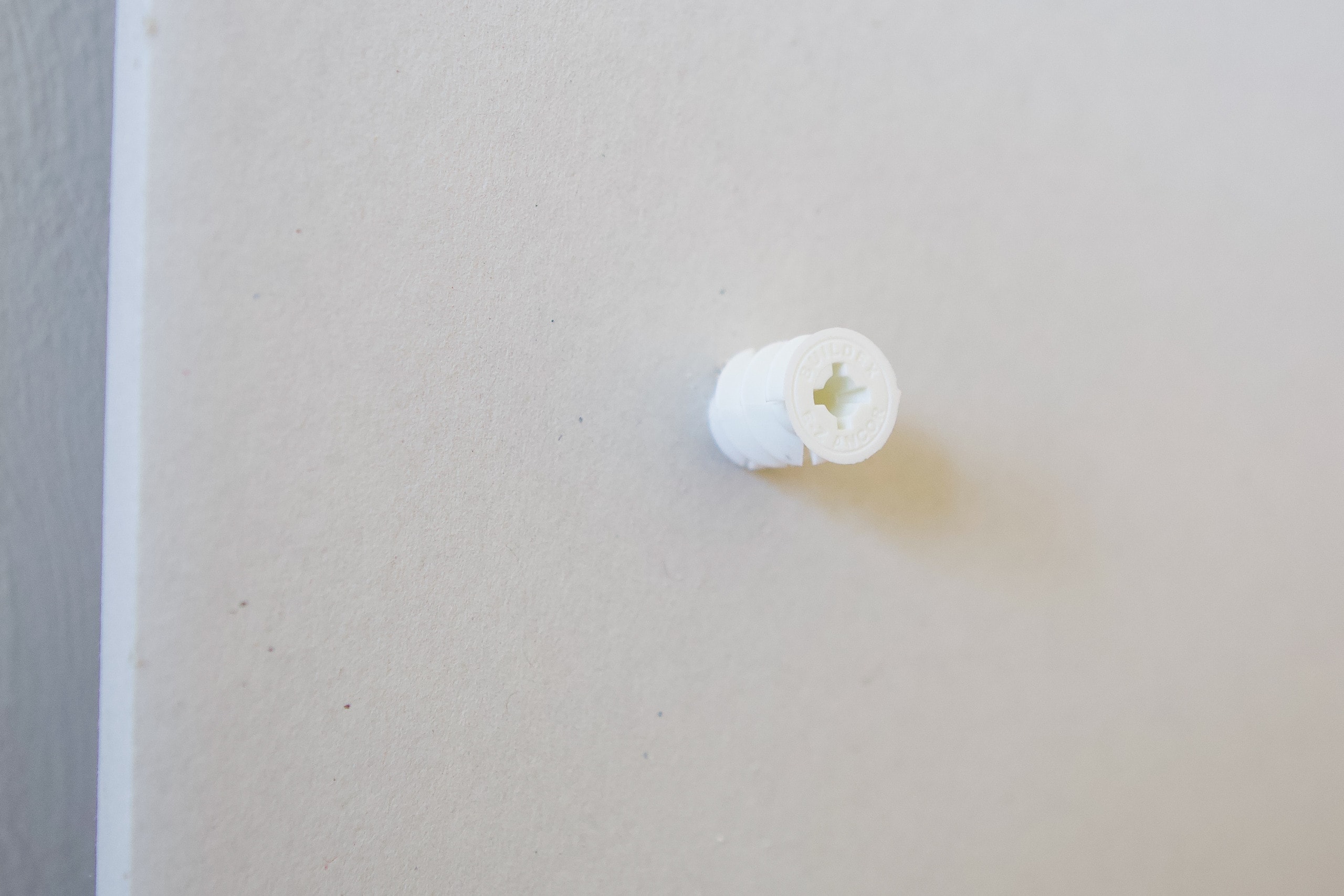
- Insert the tip of the anchor into the wall.
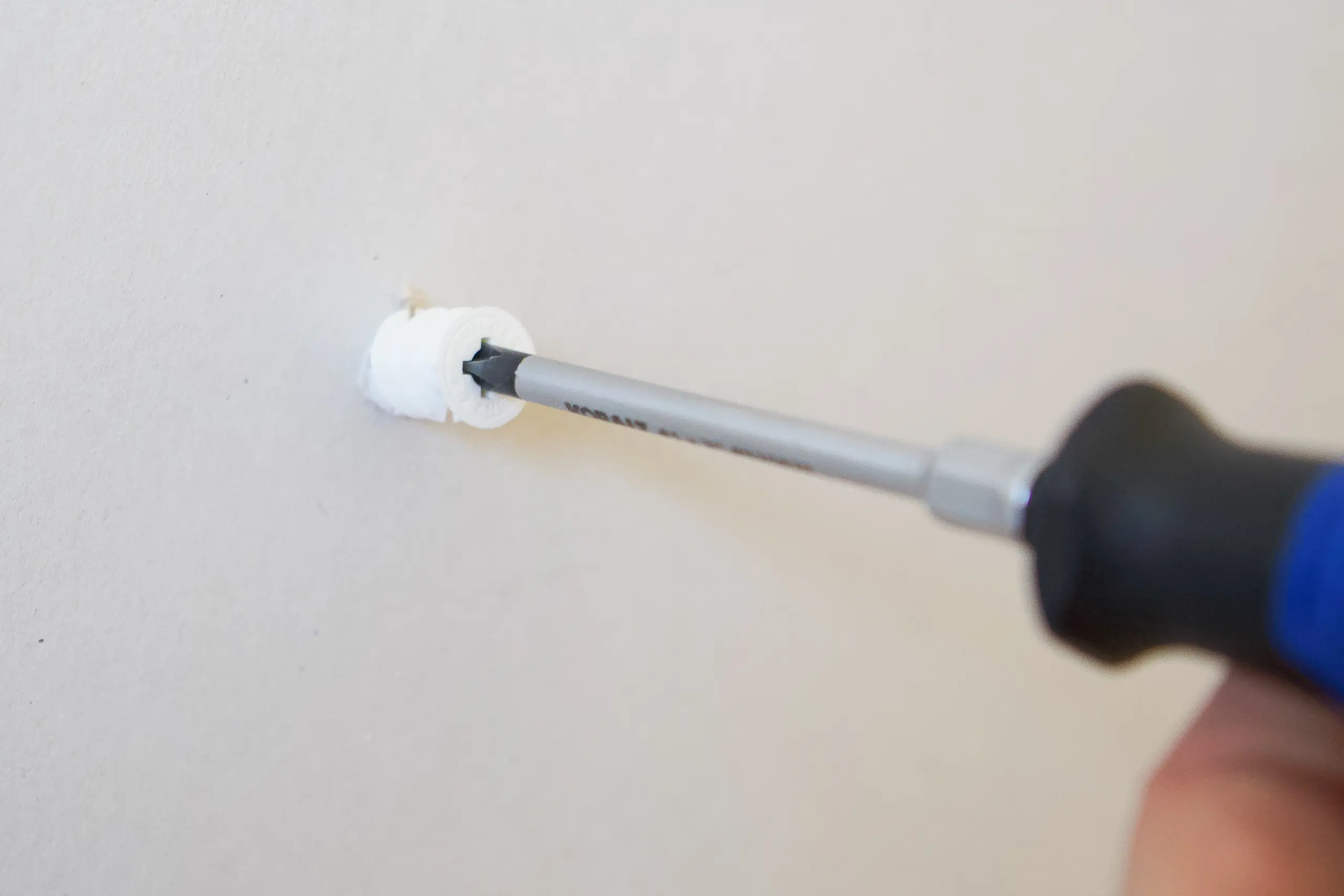
- Use a screwdriver to get the anchor flush with the wall.
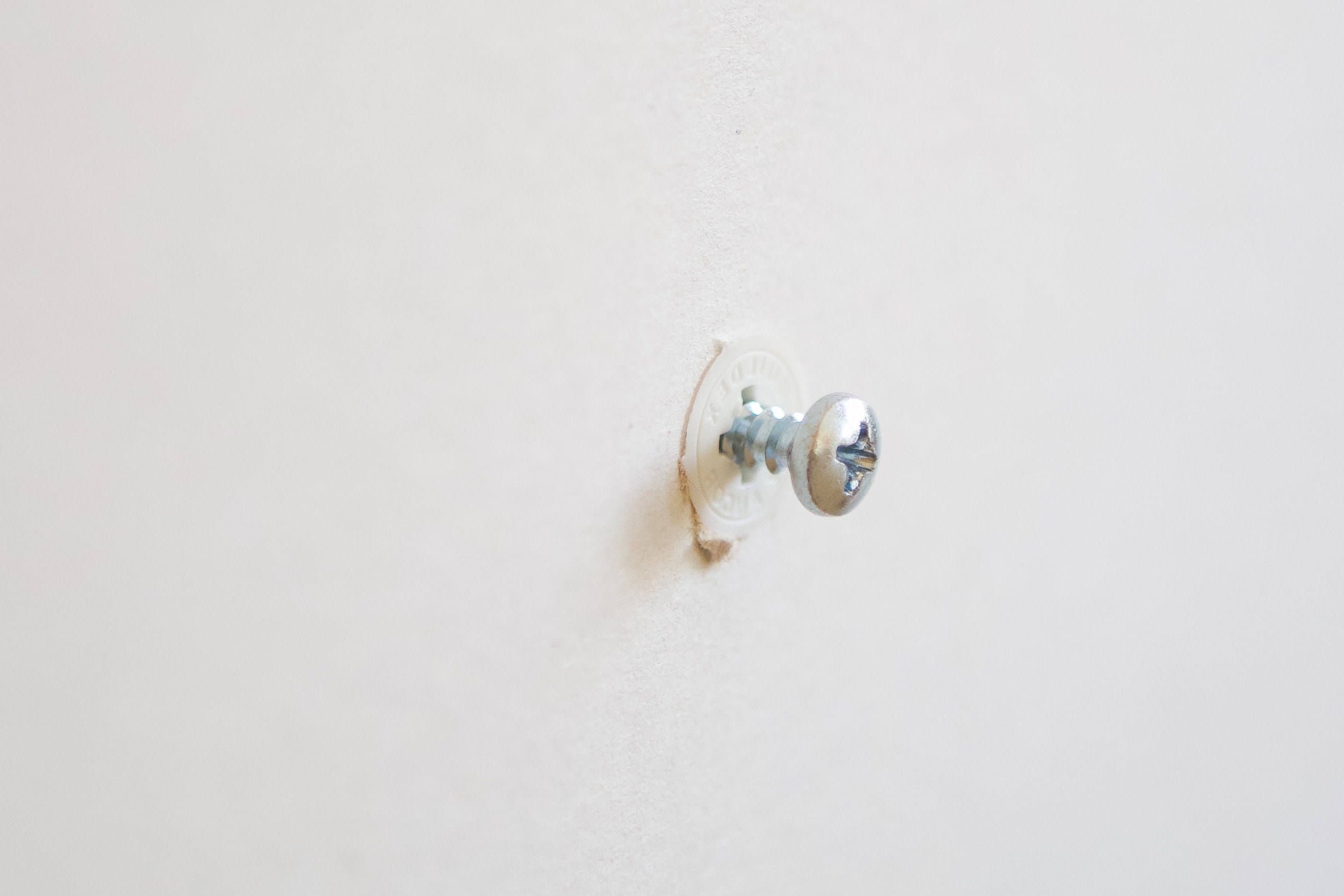
- Use a screwdriver to twist in the screw.

- You’ll hear a click once the screw is inserted far enough into the wall. That’s the plastic anchor splitting in two to grip the back of the wall.
Steps to Insert a Snap Toggle Bolt
- Use a 1/2 inch pilot bit to drill a hole into the wall.

- Insert the metal portion into the hole.
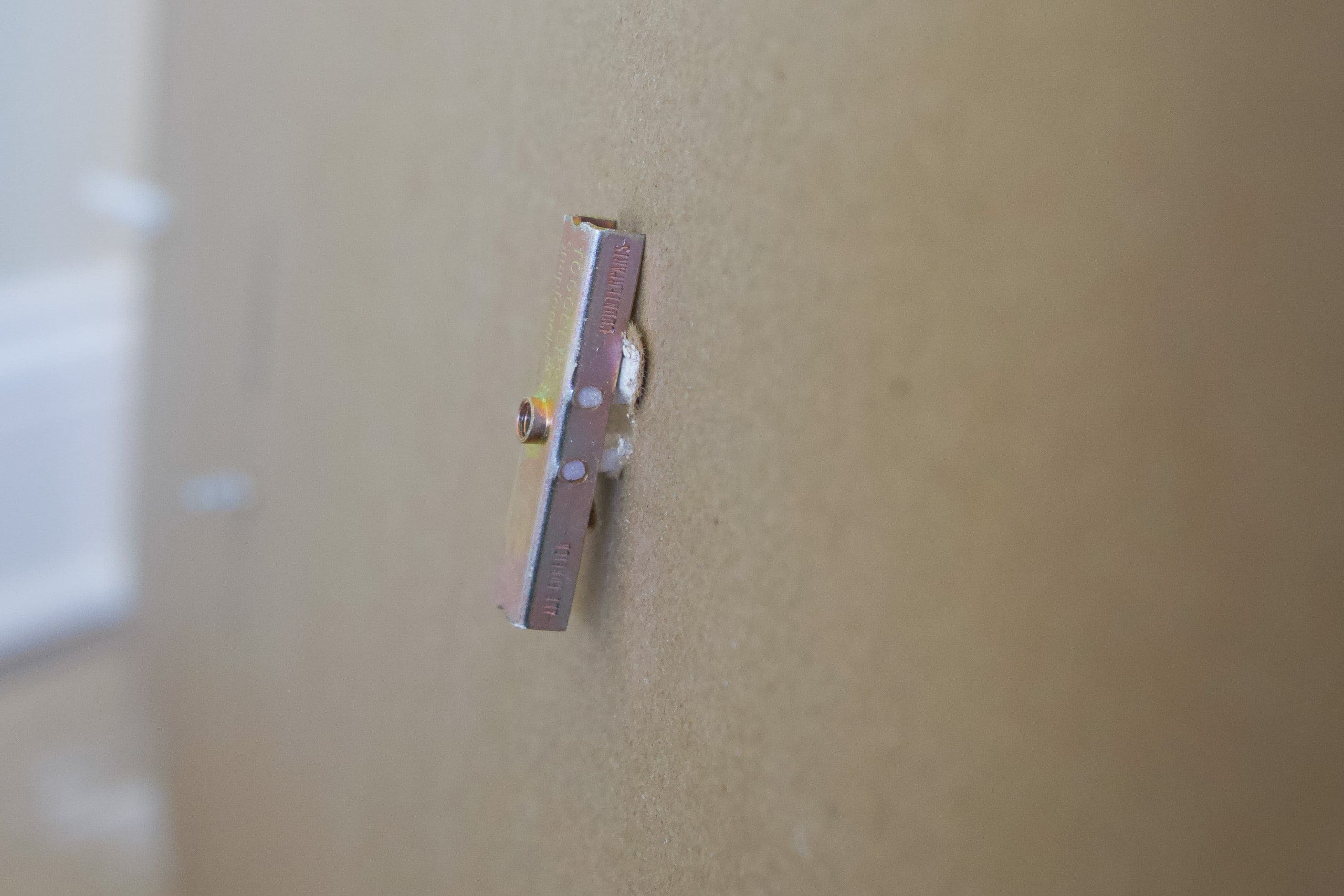
- Pull the plastic to make sure that the metal is pulled tight against the back of the drywall.
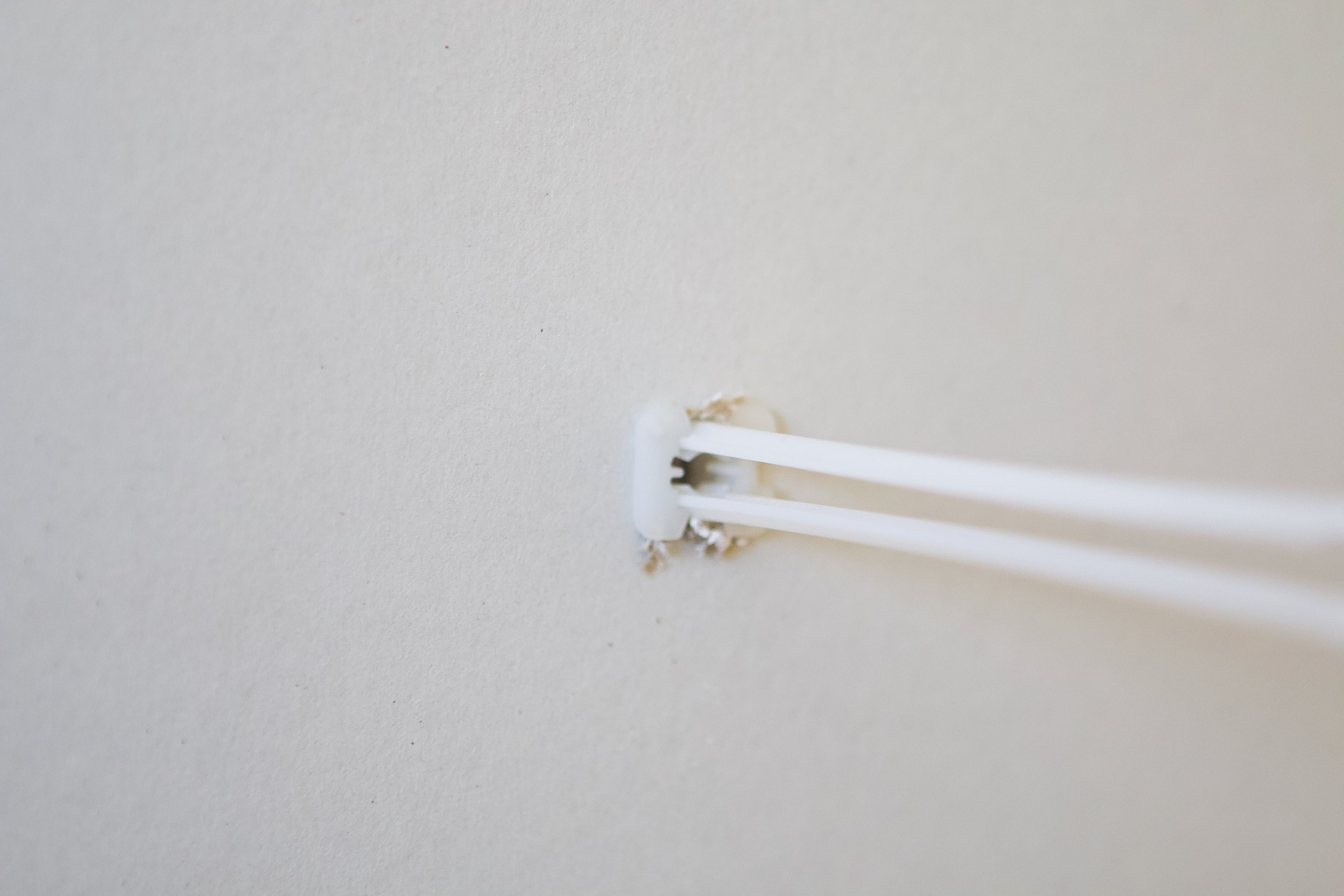
- Pull the plastic taut until it is flush with the wall.
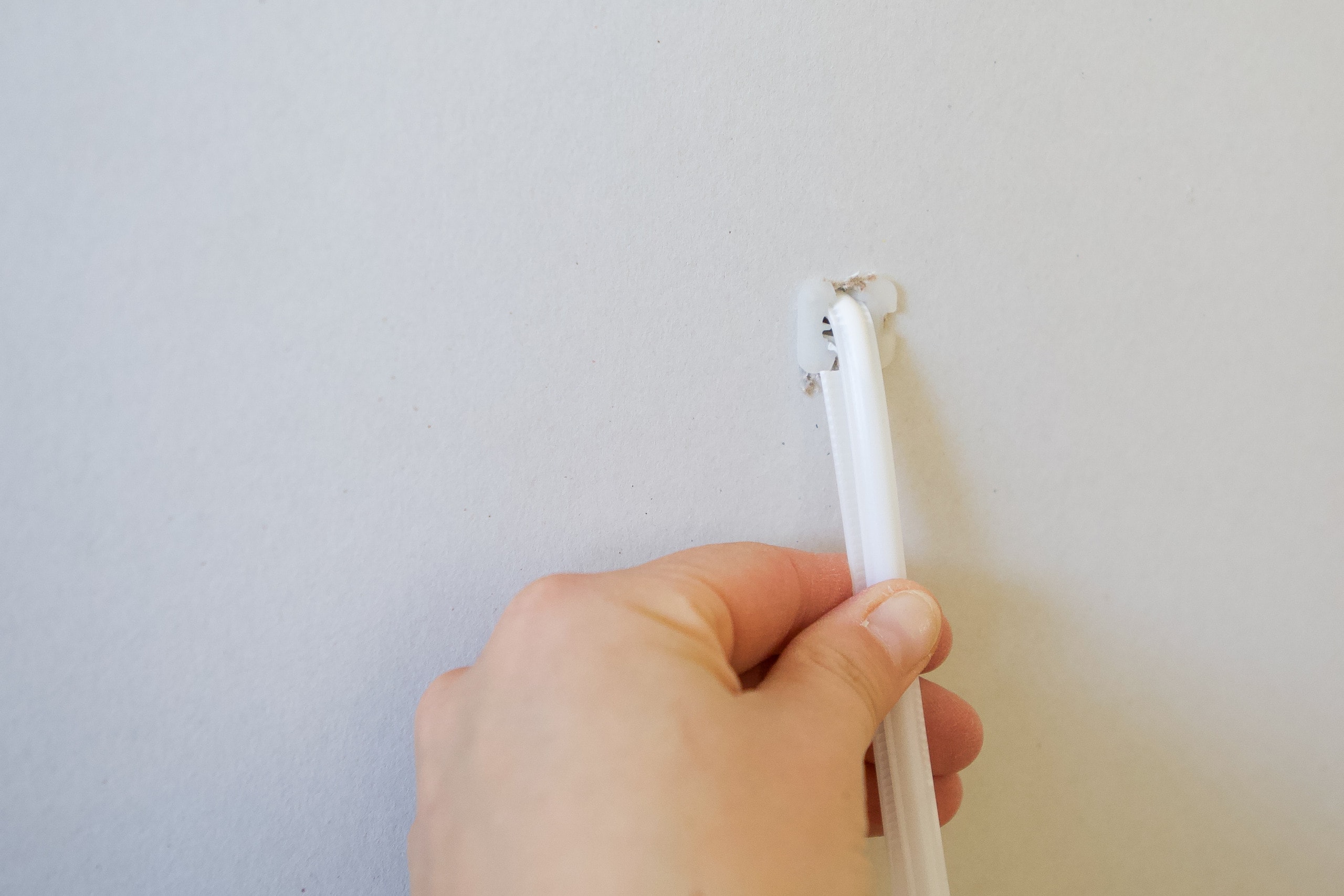
- Snap the excess plastic off.
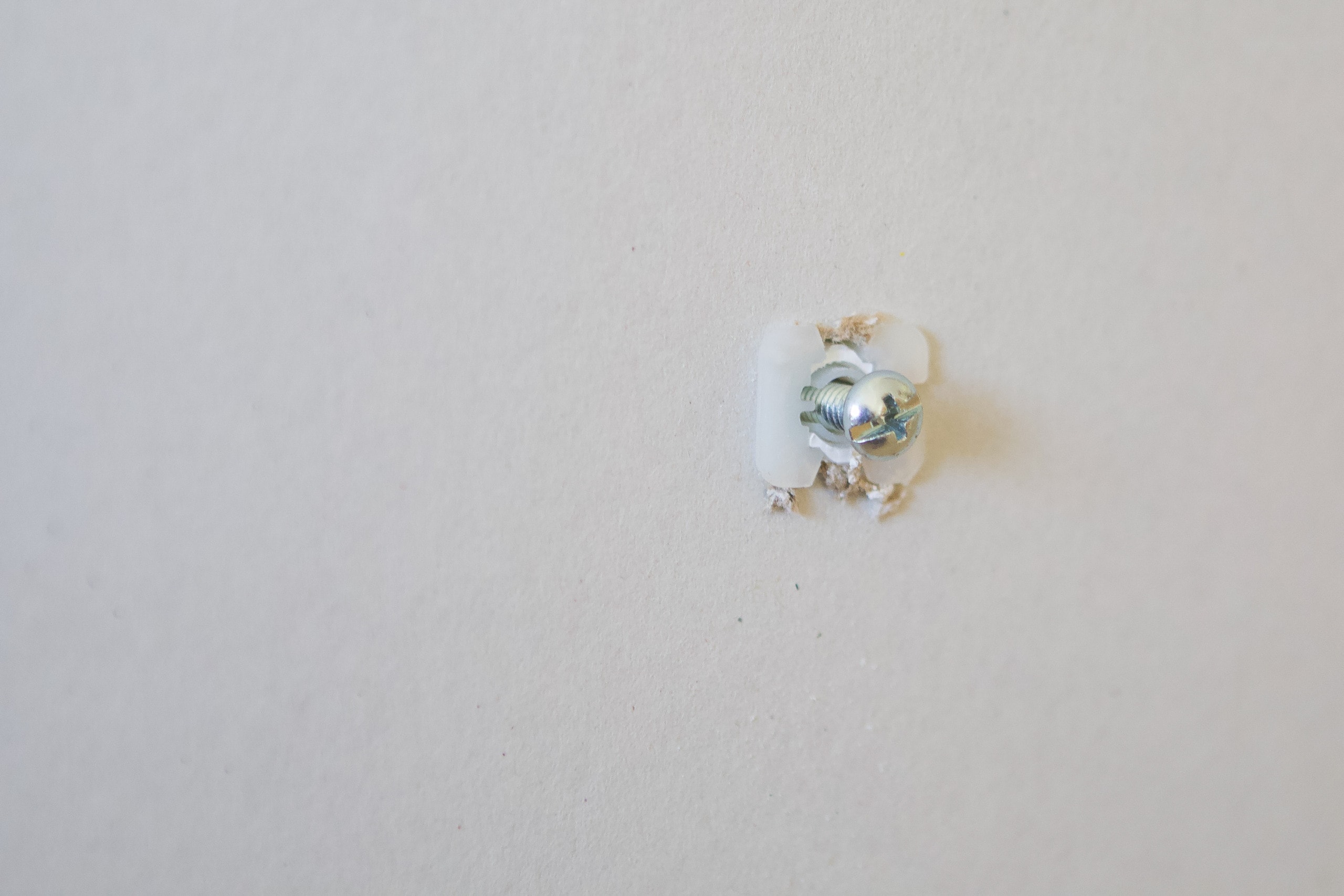
- Insert the screw into the wall.

- Here’s what it looks like from the back of the drywall. See, it’s super secure!
How do I remove a wall anchor?
To remove a wall anchor, you can either pull it out the way it came in or push it into the drywall cavity. If you’re pulling it out, use needle-nose pliers. If you used winged anchors, then this might be really tricky to do as the wings are gripping the back of the drywall. In most cases, I think it’s best to use a screwdriver to push the anchor into the drywall cavity. Then you can patch and paint right over the hole (here’s how to do that!).
My Favorite Supplies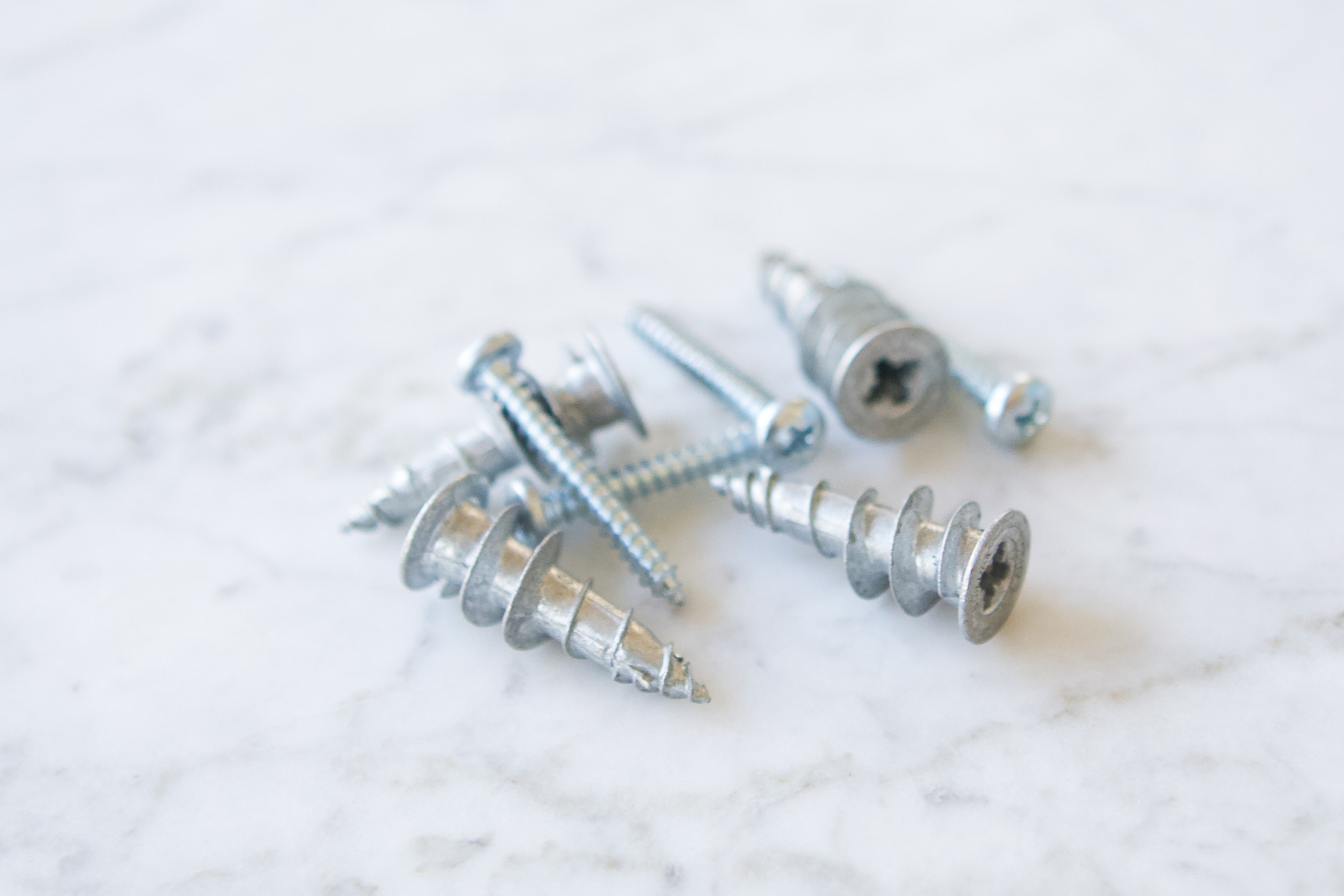
Here are the tools you’ll need when using a wall anchor to hang just about anything on your walls.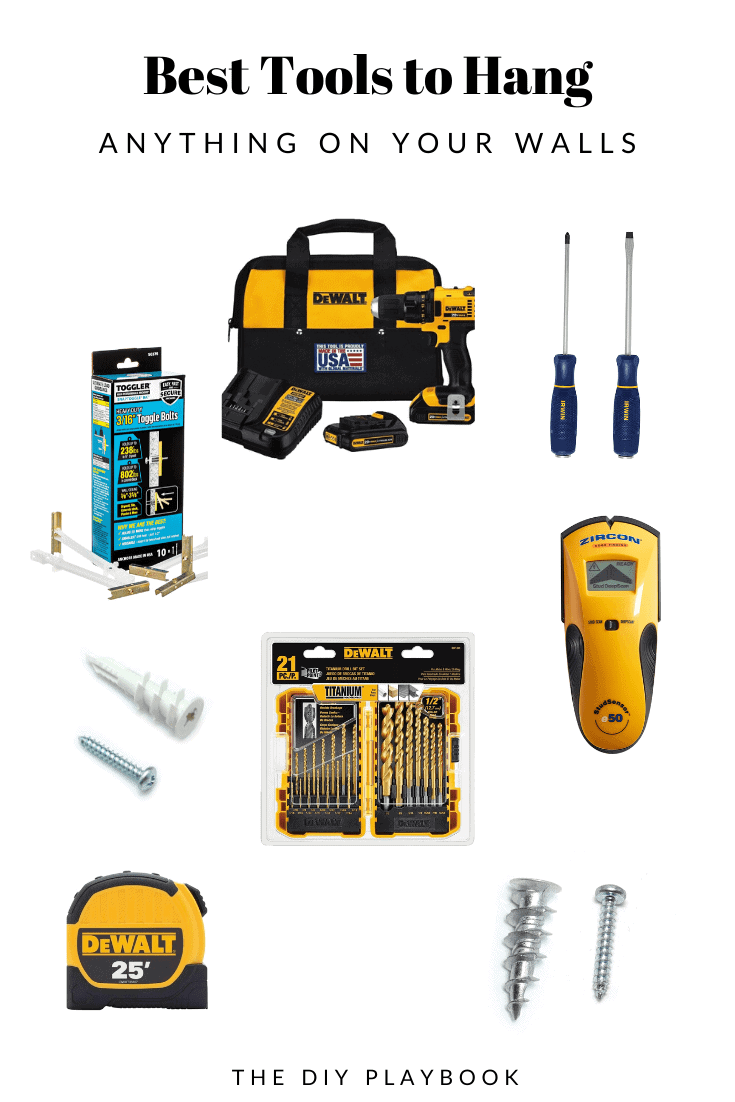
Stud Finder // Tape Measure // Drill // Screwdriver // Pilot Bits // Winged Plastic Anchors // Snap Toggle Bolts // Self-Drilling Metal Anchors
I hope this post gives you a little more confidence to tackle that next hanging project. I promise this isn’t as scary as it may seem. Don’t be afraid to make some holes in your walls, friends!
Casey





